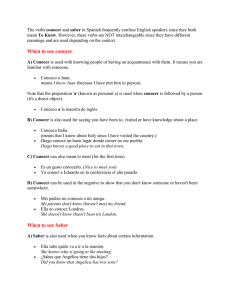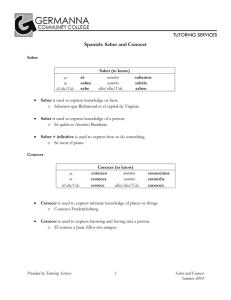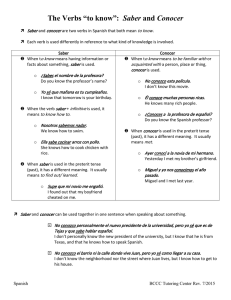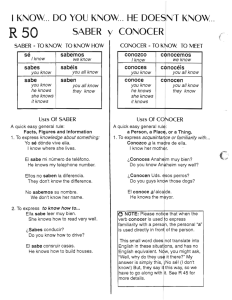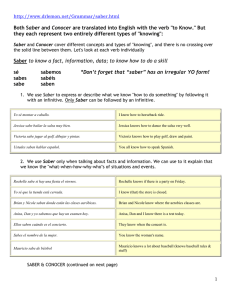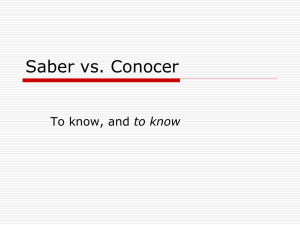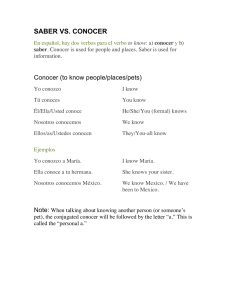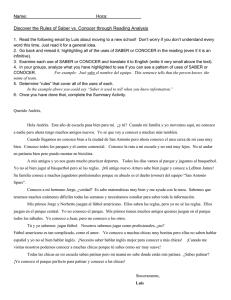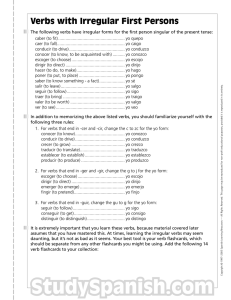Saber and Conocer -- Transcript Context Hola y
Anuncio
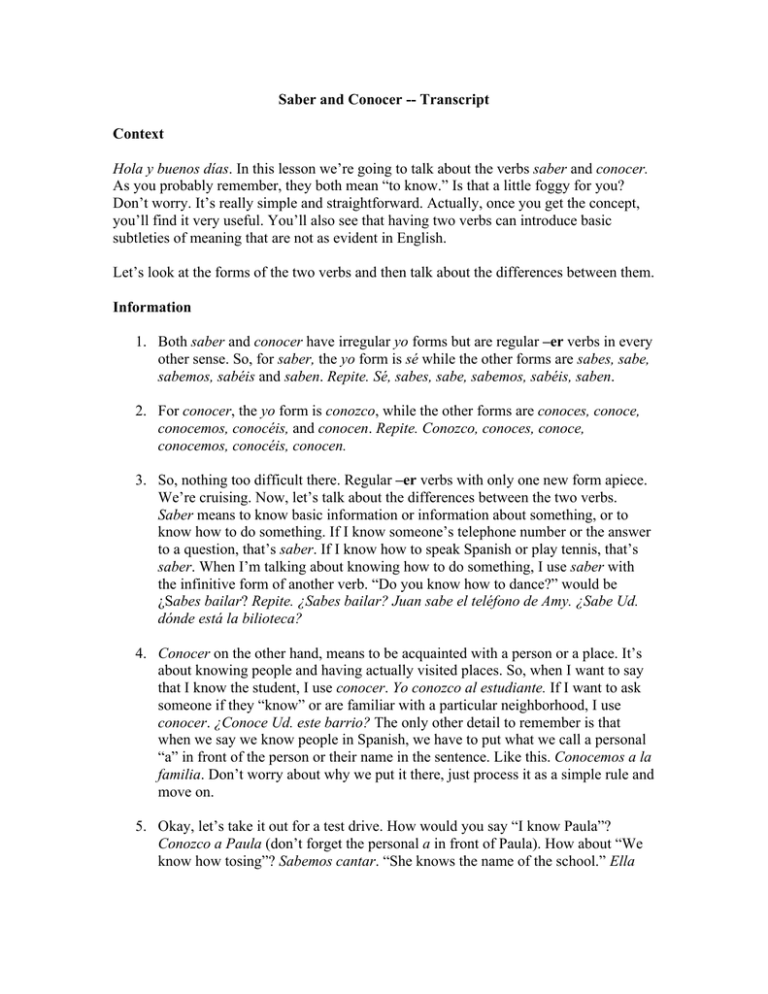
Saber and Conocer -- Transcript Context Hola y buenos días. In this lesson we’re going to talk about the verbs saber and conocer. As you probably remember, they both mean “to know.” Is that a little foggy for you? Don’t worry. It’s really simple and straightforward. Actually, once you get the concept, you’ll find it very useful. You’ll also see that having two verbs can introduce basic subtleties of meaning that are not as evident in English. Let’s look at the forms of the two verbs and then talk about the differences between them. Information 1. Both saber and conocer have irregular yo forms but are regular –er verbs in every other sense. So, for saber, the yo form is sé while the other forms are sabes, sabe, sabemos, sabéis and saben. Repite. Sé, sabes, sabe, sabemos, sabéis, saben. 2. For conocer, the yo form is conozco, while the other forms are conoces, conoce, conocemos, conocéis, and conocen. Repite. Conozco, conoces, conoce, conocemos, conocéis, conocen. 3. So, nothing too difficult there. Regular –er verbs with only one new form apiece. We’re cruising. Now, let’s talk about the differences between the two verbs. Saber means to know basic information or information about something, or to know how to do something. If I know someone’s telephone number or the answer to a question, that’s saber. If I know how to speak Spanish or play tennis, that’s saber. When I’m talking about knowing how to do something, I use saber with the infinitive form of another verb. “Do you know how to dance?” would be ¿Sabes bailar? Repite. ¿Sabes bailar? Juan sabe el teléfono de Amy. ¿Sabe Ud. dónde está la bilioteca? 4. Conocer on the other hand, means to be acquainted with a person or a place. It’s about knowing people and having actually visited places. So, when I want to say that I know the student, I use conocer. Yo conozco al estudiante. If I want to ask someone if they “know” or are familiar with a particular neighborhood, I use conocer. ¿Conoce Ud. este barrio? The only other detail to remember is that when we say we know people in Spanish, we have to put what we call a personal “a” in front of the person or their name in the sentence. Like this. Conocemos a la familia. Don’t worry about why we put it there, just process it as a simple rule and move on. 5. Okay, let’s take it out for a test drive. How would you say “I know Paula”? Conozco a Paula (don’t forget the personal a in front of Paula). How about “We know how tosing”? Sabemos cantar. “She knows the name of the school.” Ella sabe el nombre de la escuela. Finally, how would you say “I’ve been to Madrid (I am familiar with the city)”? Conozco Madrid. Review – Things to Remember So, as you can see, saber and conocer are pretty simple. Saber means to know information or to know how to do something. Conocer means to be acquainted with people or places. They both have irregular yo forms but are other wise regular –er verbs in trems of their conjugation. If you know this, you’ve got it going on. Ya lo entiendes bien. Eso es todo. Adiós.
